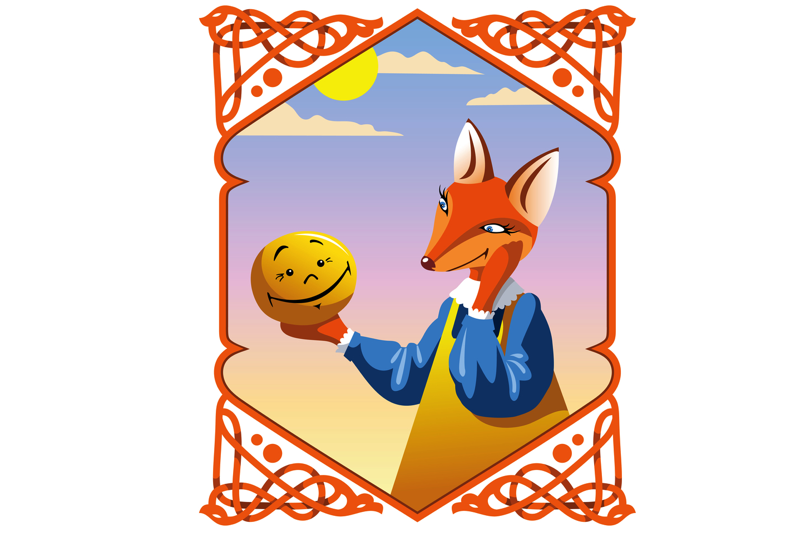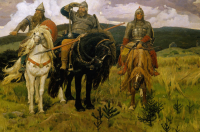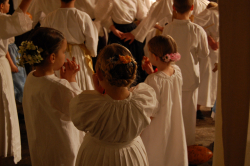Even though there is one word for “fairytale” and “folktale” in Russian (“сказка” – skazka), the distinction between those two genres exist: these are народные (folk) and литературные (literary) сказки.
The first term refers to oral tradition, which, until recent centuries, was primary. The very word сказка is a reminder of that, as it derives from the word “сказать” (skazat’) – to say.
The second genre is represented by stories either completely made up by a modern author or based on a folktale but edited and attributed to a specific creator.
Today, we’ll take a look at folktales. No one knows who, where, and when came up with them, but everyone in Russia knows what they are about. You can find that out, too, and it won’t take a long time, as they are quite brief.
Kolobok
Kolobok is a round bun that, much like the Gingerbread Man, apparently didn’t want to be eaten by people who baked it. It tried to get away but, as per usual, it’s not a good idea to try and escape your fate, at least if you’re a folklore character. You can find out what happened to Kolobok here.
Ryaba the Hen
Shortly put, it’s a tale about a chicken that lays a golden egg much to the confusion of its owners. The thing with such ancient stories is that no one can possibly know the initial intent of their author, so there may be as many interpretations as you’d like. Perhaps Ryaba the Hen has to do with the world egg – a common motif in myths around the world. Or maybe researchers dig too deeply and it’s just a story about a magical chicken. Who knows? You can check out this folktale here and maybe you’ll come up with your own meaning.
At the Behest of the Pike
In folklore studies, there is a catalogue of stories called the Aarne-Thompson-Uther Index; it categorizes common types of folktales. At the Behest of the Pike belongs to the ATU 675 (The Lazy Boy) category, which speaks for itself – its protagonist, Emelya, is a total layabout. Researchers have noted its resemblance to Peruonto, an Italian fairytale first written down in the 17th century. You can check them both out and see for yourself: At the Behest of the Pike is available here and Peruonto – here.
The Giant Turnip
Now, this seemingly simple story still puzzles researchers. You can read it here. It sounds like it’s supposed to teach us the importance of mutual help, but if you look at the original text, you’ll see that it's actually five unnamed feet (!) who help the characters deal with the turnip. We probably won’t ever know what exactly these feet meant for storytellers and listeners of the old times, but there are certain speculations. For example, some believe that it has to do with rafter feet used in construction.
In The Golden Cockerel, Alexander Pushkin described folktales like this – “Tale of sense, if not of truth! Food for thought to honest youth,” so check out our previous articles on Russian folklore for even more food for thought: you can find them using the Russian folklore tag.




